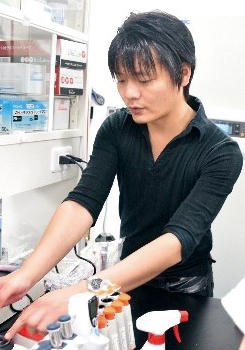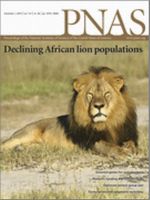
Yukuto SATO, Ph. D.
Assistant Professor, Lecturer
Center for Strategic Research Project,
Organization for Research Promotion,
University of the Ryukyus
2F room 210, Subtropical Science Research Bldg.,
1 Senbaru, Nishihara-cho, Nakagami-gun, Okinawa,
903-0213, Japan
Tel: +81-98-895-8485
![]()
Lecturer(Non-Full-time)
Division of Biomedical Information Analysis,
Department of Integrative Genomics,
Tohoku Medical Megabank Organization,
Tohoku University
Webpage: http://nagasakilab.csml.org/ja/satoyukuto
Tohoku Medical Megabank Building, Tohoku University
2-1 Seiryo-machi, Aoba-ku, Sendai, Miyagi,
980-8573, Japan
Research Interests:
Human-associated microbiomes (meta-barcoding & metagenomic approaches)
Mitochondrial genome, function, and human diseases
Molecular evolution and gene/genome duplications
Ecological and environmental meta-barcoding analysis for aquatic animals and others
Positions Held:
2013-2016.7 Assistant Professor, Tohoku University (Masao Nagasaki Lab.)
2009-2013 Postdoctoral Fellow, National Institute of Genetics (Naruya Saitou and Takashi Gojobori Lab.)
2008-2009 Postdoctoral Fellow, University of Tokyo (Mutsumi Nishida Lab.)
Educational Background:
2008 Ph. D. (Agr.) University of Tokyo, Japan (Mutsumi Nishida Lab.)
2005 M. (Agr.) University of Tokyo, Japan (Mutsumi Nishida Lab.)
2003 B. (Agr.) Tohoku University, Japan (Nobuhiko Taniguchi Lab.)
Publications:
25. Yamagishi J*, Sato Y* Shinozaki N, Ye B, Tsuboi A, Nagasaki M, and Yamashita R. 2016. Comparison of boiling and robotics automation method in DNA extraction for metagenomic sequencing of human oral microbes. (*equally contributed) PLoS One, 11: e0154389. [doi:10.1371/journal.pone.0154389]
24. Pan X, Nariai N, Fukuhara N, Saito S, Sato Y, Katsuoka F, Kojima K, Kuroki Y, Danjoh I, Saito R, Hasegawa S, Okitsu Y, Kondo A, Onishi Y, Nagami F, Kiyomoto H, Hozawa A, Fuse N, Nagasaki M, Shimizu R, Yasuda J, Harigae H, and Yamamoto M. 2016. Monitoring of minimal residual disease in early T-cell precursor acute lymphoblastic leukaemia by next-generation sequencing. British Journal of Haematology, published online ahead of print (2016 Jan 29). [doi:10.1111/bjh.13948]
23. Yamaguchi-Kabata Y, Nariai N, Kawai Y, Sato Y, Kojima K, Tateno M, Katsuoka F, Yasuda J, Yamamoto M, and Nagasaki M. 2015. iJGVD: an integrative Japanese genome variation database based on whole-genome sequencing. Human Genome Variation, 2: 15050. [doi:10.1038/hgv.2015.50]
22. Inoue J*, Sato Y*, Sinclair R*, Tsukamoto K, and Nishida M. 2015. Rapid genome reshaping by multiple-gene loss after whole-genome duplication in teleost fish suggested by mathematical modeling. (*equally contributed) PNAS, 112: 14918-14923. [doi: 10.1073/pnas.1507669112]
 PNAS December 1, 2015; vol. 112, no. 48.
PNAS December 1, 2015; vol. 112, no. 48.
– Press Releases: ![]() OIST (Eng.)
OIST (Eng.) ![]() OIST (Jpn.)
OIST (Jpn.) ![]() Univ. Ryukyus (Jpn.)
Univ. Ryukyus (Jpn.) ![]() Tohoku Univ. (Jpn.)
Tohoku Univ. (Jpn.)
– Media Coverage: ![]() EurekAlert! (Eng.)
EurekAlert! (Eng.) ![]() Physorg (Eng.)
Physorg (Eng.) ![]() MONOist (Jpn.)
MONOist (Jpn.) ![]() Yahoo!News (Jpn.)
Yahoo!News (Jpn.)
21. Nagasaki M, Yasuda J, Katsuoka F, Nariai N, Kojima K, Kawai Y, Yamaguchi-Kabata Y, Yokozawa J, Danjoh I, Saito S, Sato Y, Mimori T, Tsuda K, Saito R, Pan X, Nishikawa S, Ito S, Kuroki Y, Tanabe O, Fuse N, Kuriyama S, Kiyomoto H, Hozawa A, Minegishi N, Engel JD, Kinoshita K, Kure S, Yaegashi N, ToMMo Japanese Reference Panel Project, and Yamamoto M. 2015. Rare variant discovery by deep whole-genome sequencing of 1,070 Japanese individuals. Nature Communications, 6: 8018. [doi:10.1038/ncomms9018]
20. Miya M, Sato Y, Fukunaga T, Sado T, Poulsen JY, Sato K, Minamoto T, Yamamoto T, Yamanaka H, Araki H, Kondoh M, and Iwasaki W. 2015. MiFish, a set of universal PCR primers for metabarcoding environmental DNA from fishes: Detection of >230 subtropical marine species. Royal Society Open Science, 2: 150088. [doi:10.1098/rsos.150088]
– Press Release: ![]() JST (Jpn.)
JST (Jpn.)
– Media Coverage: ![]() Jikken Igaku, Vol.34 No.1, Jan. 2016 (Jpn.)
Jikken Igaku, Vol.34 No.1, Jan. 2016 (Jpn.)
19. Sato Y*, Yamagishi J*, Yamashita R*, Shinozaki N, Ye B, Yamada T, Yamamoto M, Nagasaki M, and Tsuboi A. 2015. Inter-individual differences in the oral bacteriome are greater than intra-day fluctuations in individuals. (*equally contributed) PLoS One, 10: e0131607. [doi:10.1371/journal.pone.0131607]
18. Mimori T, Nariai N, Kojima K, Sato Y, Kawai Y, Yamaguchi-Kabata Y, and Nagasaki M. 2015. Estimating copy numbers of alleles from population-scale high-throughput sequencing data, BMC Bioinformatics, 16(Suppl 1): S4. [doi:10.1186/1471-2105-16-S1-S4]
17. Nariai N, Kojima K, Saito S, Mimori T, Sato Y, Kawai Y, Yamaguchi-Kabata Y, Yasuda J, and Nagasaki M. 2015. HLA-VBSeq: accurate HLA typing at full resolution from whole-genome sequencing data, BMC Genomics, 16(Suppl 2): S7. [doi:10.1186/1471-2164-16-S2-S7]
16. Nariai N, Kojima K, Mimori T, Sato Y, Kawai Y, Yamaguchi-Kabata Y, and Nagasaki M. 2014. TIGAR2: sensitive and accurate estimation of transcript isoform expression with longer RNA-Seq reads, BMC Genomics, 15(Suppl 10): S5. [doi:10.1186/1471-2164-15-S10-S5]
15. Motoike IN, Matsumoto M, Danjoh I, Katsuoka F, Kojima K, Nariai N, Sato Y, Yamaguchi-Kabata Y, Ito S, Kudo H, Nishijima I, Nishikawa S, Pan X, Saito R, Saito S, Saito T, Shirota M, Tsuda K, Yokozawa J, Igarashi K, Minegishi N, Tanabe O, Fuse N, Nagasaki M, Kinoshita K, Yasuda J, and Yamamoto M. 2014. Validation of multiple single nucleotide variation calls by additional exome analysis with a semiconductor sequencer to supplement data of whole-genome sequencing of a human population. BMC Genomics, 15: 673. [doi:10.1186/1471-2164-15-673]
14. Sato Y, Kojima K, Nariai N, Yamaguchi-Kabata Y, Takahashi M, Mimori T, and Nagasaki M. 2014. SUGAR: graphical user interface-based data refiner for high-throughput DNA sequencing. BMC Genomics, 15: 664. [doi:10.1186/1471-2164-15-664]
13. Kojima K, Nariai N, Mimori T, Yamaguchi-Kabata Y, Sato Y, Kawai Y, and Nagasaki M. 2014. HapMonster: a statistically unified approach for variant calling and haplotyping based on phase-informative reads. Lecture Notes in Bioinformatics, 8542: 107–118. [doi:10.1007/978-3-319-07953-0_9]
12. Ohtsuki T, Nariai N, Kojima K, Mimori T, Sato Y, Kawai Y, Yamaguchi-Kabata Y, Shibuya T, and Nagasaki M. 2014. SVEM: a structural variant estimation method using multi-mapped reads on breakpoints. Lecture Notes in Bioinformatics, 8542: 208-219. [doi:10.1007/978-3-319-07953-0_17]
11. Mimori T, Nariai N, Kojima K, Takahashi M, Ono A, Sato Y, Yamaguchi-Kabata Y, and Nagasaki M. 2013. iSVP: an integrated structural variant calling pipeline from high-throughput sequencing data. BMC Systems Biology, 7(Suppl 6): S8. [doi:10.1186/1752-0509-7-S6-S8]
10. Kojima K, Nariai N, Mimori T, Takahashi M, Yamaguchi-Kabata Y, Sato Y, and Nagasaki M. 2013. A statistical variant calling approach from pedigree information and local haplotyping with phase informative reads. Bioinformatics, 29: 2835-2843. [doi:10.1093/bioinformatics/btt503]
9. Miya M, Friedman M, Satoh TP, Takeshima H, Sado T, Iwasaki W, Yamanoue Y, Nakatani M, Mabuchi K, Inoue JG, Poulsen JY, Fukunaga T, Sato Y, and Nishida M. 2013. Evolutionary origin of the Scombridae (tunas and mackerels): members of a paleogene adaptive radiation with 14 other pelagic fish families. PLoS One, 8: e73535. [doi:10.1371/journal.pone.0073535]
8. Sato Y, Hachiya T, and Iwasaki W. 2012. Next-generation sequencing in aquatic biology: the current status and future directions. Fish Genetics and Breeding Science, 41: 17-32. (In Japanese with English abstract)
7. Satoh TP*, Sato Y*, Masuyama N, Miya M, and Nishida M. 2010. Transfer RNA gene arrangement and codon usage in vertebrate mitochondrial genomes: a new insight into gene order conservation. (*equally contributed) BMC Genomics, 11: 479. [doi:10.1186/1471-2164-11-479]
6. Sato Y and Nishida M. 2010. Teleost fish with specific genome duplication as unique models of vertebrate evolution. Environmental Biology of Fishes, 88: 169-188. [doi:10.1007/s10641-010-9628-7]
5. Sato Y and Nishida M. 2009. Whole genome duplication and the evolution of fishes. Japanese Journal of Ichthyology 56: 89-109. (In Japanese with English abstract)
4. Sato Y, Hashiguchi Y, and Nishida M. 2009. Temporal pattern of loss/persistence of duplicate genes involved in signal transduction and metabolic pathways after teleost-specific genome duplication. BMC Evolutionary Biology, 9: 127. [doi:10.1186/1471-2148-9-127]
3. Sato Y, Hashiguchi Y, and Nishida M. 2009. Evolution of multiple phosphodiesterase isoforms in stickleback involved in cAMP signal transduction pathway. BMC Systems Biology, 3: 23. [doi:10.1186/1752-0509-3-23]
2. Sato Y and Nishida M. 2009. Electric charge divergence in proteins: insights into the evolution of their three-dimensional properties. Gene, 441: 3-11. [doi:10.1016/j.gene.2008.06.026]
1. Sato Y and Nishida M. 2007. Post-duplication charge evolution of phosphoglucose isomerases in teleost fishes through weak selection on many amino acid sites. BMC Evolutionary Biology, 7: 204. [doi:10.1186/1471-2148-7-204]
Publication List in Public Databases:
– Google Scholar
– PubMed
Research Grants:
2015 JSPS Grant-in-Aid for Young Scientists (B) (Pipeline development for environmental DNA analysis of vertebrates)
2010 JSPS Grant-in-Aid for Young Scientists (B) (RNA/cDNA sequencing of non-teleost actinopterygians)
2009 Sasakawa Scientific Research Grant from the Japan Science Society (Protein evolution in deepsea fish)
Awards:
Best Poster Prize at Annual Meeting for the Society of Evolutionary Studies, Japan (August 23, 2008, Tokyo, Japan): link to the web archive (Jpn.)
– Related publications: (22) Inoue, Sato, Sinclair, et al. 2015 PNAS 112:14918-14923; (4) Sato, Hashiguchi, and Nishida 2009 BMC Evol Biol 9:127
Learned Society:
Society of Evolutionary Studies, Japan (2005-)
The Genetics Society of Japan (2009-)
BioinfoWakate (Japanese association of young scientists in the field of bioinformatics) (2009-)
Referee Experiences:
BMC Genomics, Cladistics, Environmental Biology of Fishes, Evolutionary Bioinformatics, Gene, Genome Biology and Evolution, Ichthyological Research, Journal of Molecular Evolution, Marine Biotechnology, Marine Genomics, Molecular Biology and Evolution, PLoS One, PNAS, Reproduction, Zoological Science

